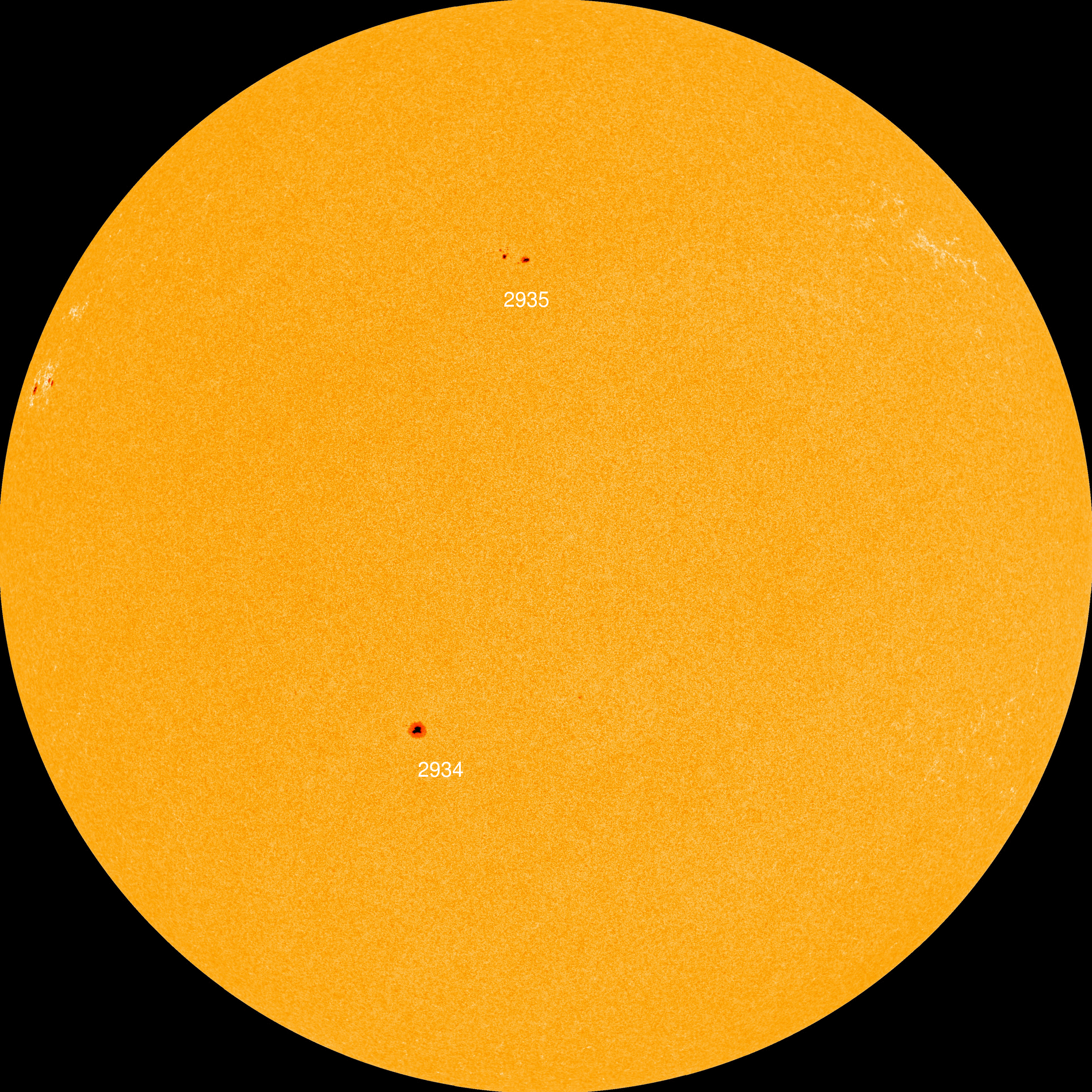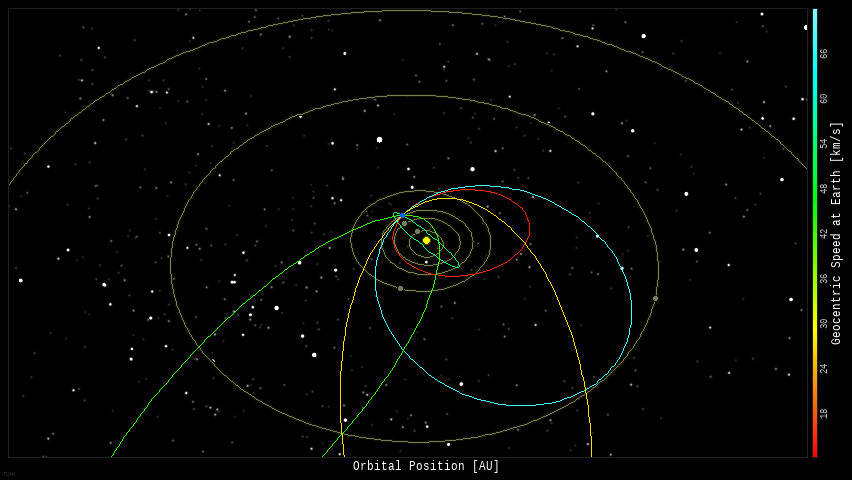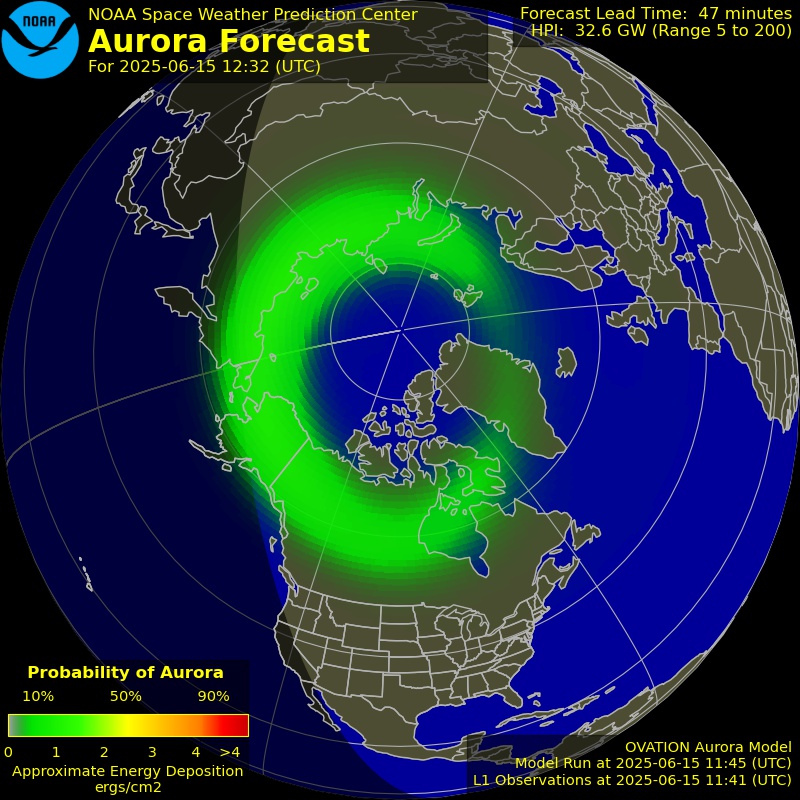What got you into astronomy?
In a recent meeting of the Warren Astronomical Society, I had numerous members tell their story of how they got into astronomy. Some (like myself) have been into it for as long as they can remember, others got into it after they retired, some had parents, scout troops and friends introduce them to the night sky. Any age is the right age to get into astronomy!
During that same meeting, I posted a link to the Worldwide Telescope web client into the session’s chat – one of the older society members absolutely gushed over how cool it was. This prompted me to ask the AAS if anyone could give a lecture to the W.A.S. about the Worldwide Telescope – I have them scheduled for the June 6th meeting!

Jupiter appears in the southwestern sky after sunset this week; Saturn has vanished into the glare of the Sun.

Venus and Mars appear in the southeastern predawn sky all week; the Moon appears near the star Antares on Jan 27th.

The Moon appears between Mars and the star Antares on Jan 28th.

The Moon appears near Mars on Jan 29th.

The east-southeastern sky after sunset is filled with bright stars and constellations from horizon to zenith!


- The Third Quarter Moon occurs on Jan. 25th – rising around midnight, and visible to the south after sunrise.
- After Jan. 25th, the Moon will be a Waning Crescent – visible low to the east before sunrise.
- The New Moon occurs on Feb. 1st. – the part of the Moon facing Earth is completely in shadow.

If you click on the Moon image above, or click this link, you will go to NASA’s Moon Phase and Libration, 2022 page – it will show you what the Moon looks like right now. If you click the image on that page, you will download a high-rez TIFF image annotated with the names of prominent features – helpful for logging your lunar observations!
Moon News

The Sun has two named sunspots, and something rotating into view that will soon get its own designation; plage areas are both rotating into view with the unnamed sunspot (left side), and rotating out of view (right side).
Spaceweather.com says “There won’t be any geomagnetic storms this week. However, there might be geomagnetic unrest. NOAA forecasters expect a pair of CMEs to pass by Earth on Jan. 26th delivering, at most, glancing blows. The two close encounters could be just enough to energize Arctic auroras without igniting a full-fledged storm.”

Videos courtesy of NASA/SDO and the AIA, EVE, and HMI science teams.
You can view the Sun in near real-time, in multiple frequencies here: SDO-The Sun Now.
You can create your own time-lapse movies of the Sun here: AIA/HMI Browse Data.
You can browse all the SDO images of the Sun from 2010 to the present here: Browse SDO archive.
Amateur Solar Astrophotography

Solar Corona
Solar wind speed is 393.1 km/sec ▼ with a density of 8.5 protons/cm3 ▲ at 1445 UT.
Click here to see a near real-time animation of the corona and solar wind from the Solar & Heliospheric Observatory (SOHO).
Sun News:

- Near-Earth Objects (NEOs) discovered this month: 149, this year: 75 (+74), all time: 28,072 (+761)
- Potentially Hazardous Asteroids (PHAs): 2251 (+4 updated 2022-01-25)
- Total Minor Planets discovered (MPC): 1,143,107 (–4 updated 2022-01-25)
- Total Minor Planets discovered (NASA): 1,113,527 (updated 2021-08-17) – This value has not changed for months.
Upcoming Earth-asteroid encounters:
| Asteroid | Date(UT) | Miss Distance | Velocity (km/s) | Diameter (m) |
| 2022 BF | 2022-Jan-26 | 1.3 LD | 12.4 | 13 |
| 2022 BB | 2022-Jan-26 | 2.2 LD | 7 | 15 |
| 2021 BZ | 2022-Jan-27 | 17.6 LD | 14.6 | 39 |
| 2022 AN5 | 2022-Jan-28 | 10.2 LD | 4.9 | 22 |
| 2022 AG6 | 2022-Jan-28 | 7.6 LD | 3.7 | 19 |
| 2022 AA | 2022-Feb-04 | 6.6 LD | 4.3 | 43 |
| 2018 CA1 | 2022-Feb-05 | 9.8 LD | 15.1 | 32 |
| 2022 AV4 | 2022-Feb-07 | 19.2 LD | 3.4 | 22 |
| 2007 UY1 | 2022-Feb-08 | 13.9 LD | 6.6 | 89 |
| 2020 DF | 2022-Feb-14 | 12 LD | 8.6 | 20 |
| 2018 CW2 | 2022-Feb-18 | 2.2 LD | 10.8 | 25 |
| 2020 CX1 | 2022-Feb-18 | 7.2 LD | 8.2 | 54 |
| 455176 | 2022-Feb-22 | 14 LD | 25.1 | 257 |
| 2017 CX1 | 2022-Feb-23 | 15.2 LD | 5 | 8 |
| 2016 QJ44 | 2022-Feb-24 | 19.6 LD | 8.5 | 324 |
| 2021 QO2 | 2022-Feb-25 | 20 LD | 11 | 65 |
| 2020 UO4 | 2022-Feb-28 | 18.5 LD | 2.1 | 7 |
| 138971 | 2022-Mar-04 | 12.8 LD | 12 | 749 |
| 2021 UL7 | 2022-Mar-04 | 11.5 LD | 2 | 23 |
| 2020 DC | 2022-Mar-06 | 3.9 LD | 4.9 | 16 |
| 2021 EY1 | 2022-Mar-10 | 10.1 LD | 15.5 | 16 |
| 2015 DR215 | 2022-Mar-11 | 17.5 LD | 8.3 | 290 |
| 2018 GY | 2022-Mar-13 | 11.9 LD | 10.7 | 43 |
| 2016 FZ12 | 2022-Mar-19 | 2.2 LD | 8.3 | 16 |
| 2020 SQ | 2022-Mar-21 | 2.8 LD | 6 | 12 |
| 2013 BO76 | 2022-Mar-24 | 13.3 LD | 13.8 | 295 |
Asteroid News:

On January 24 2022, the NASA All Sky Fireball Network reported 5 fireballs!
(5 sporadics)

Fireball News:
Fireball over Wisconsin Jan. 20th!
If you see a bright meteor or a fireball, please REPORT IT to the American Meteor Society and the International Meteor Organization!

Position of the planets & several spacecraft in the inner solar system on January 25th – I note that Kepler and Spitzer are no longer shown by the Eyes app.

Position of the planets in the middle solar system:

Position of the planets in the outer solar system – from this perspective, it looks like both Voyager 2 and New Horizons are heading in the same direction.

Oblique view of the planets in the outer solar system – from this perspective it can be seen that Voyager 2 and New Horizons are heading different directions.

View of the solar system from the Voyager 2 spacecraft – I had to turn on flood-lighting, otherwise the rear side of the spacecraft so dark, you can barely see it.

Solar System News

See a list of current NASA missions here: https://www.jpl.nasa.gov/missions?mission_status=current

ex·o·plan·et /ˈeksōˌplanət/, noun: a planet orbiting a star other than the Sun.
* Confirmed Planets Discovered by TESS refers to the number planets that have been published in the refereed astronomical literature.
* TESS Project Candidates refers to the total number of transit-like events that appear to be astrophysical in origin, including false positives as identified by the TESS Project.
* TESS Project Candidates Yet To Be Confirmed refers to the number of TESS Project Candidates that have not yet been dispositioned as a Confirmed Planet or False Positive.
Exoplanet News:

OOOH Man! My wife an I LOVED seeing these types of aurora doming overhead when we were up at Michigan Tech!
SpaceWeather.com Realtime Aurora Gallery: https://spaceweathergallery.com/aurora_gallery.html
Latest Aurora Oval Forecast

- Visit an International Dark Sky Park: https://www.darksky.org/our-work/conservation/idsp/parks/
- If you live in Michigan, visit the Michigan Dark Skies site: https://sites.lsa.umich.edu/darkskies/

STEM
Be a NASA Intern! My wife’s BFF’s daughter interned at NASA – I wish I had when I was out of college!
Multispectrum Messier Tour: M2
Star clusters are commonly featured in cosmic photoshoots, and are also well-loved by the keen eye of the NASA/ESA Hubble Space Telescope. These large gatherings of celestial gems are striking sights — and the subject of this Picture of the Week, Messier 2, is certainly no exception. Messier 2 is located in the constellation of Aquarius (The Water-Bearer), about 55 000 light-years away.
It is a globular cluster, a spherical group of stars all tightly bound together by gravity. With a diameter of roughly 175 light-years, a population of 150 000 stars, and an age of 13 billion years, Messier 2 is one of the largest clusters of its kind and one of the oldest associated with the Milky Way. Most of the cluster’s mass is concentrated at its centre, with shimmering streams of stars extending outwards into space. It is bright enough that it can even be seen with the naked eye when observing conditions are extremely good. – NASA
M2 is moving on a highly eccentric (e=0.76) orbit, with a perigalactic distance of 23,500 light-years, which carries it out to an enormous apogalactic distance of 171,000 light-years, and up to 165,000 light-years above and below the Galactic plane. – messier.seds.org

Cover Image: M2 from the Hubble Space Telescope. Credit: ESA/Hubble & NASA, G. Piotto et al. .
Messier Object List: [Link]
Software Apps used for this post:
NASA Eyes on the Solar System: an immersive 3D solar system and space mission simulator – free for the PC /MAC.
Stellarium: a free web-based planetarium app. It’s a great tool for planning observing sessions.
SpaceEngine – Explore the universe in 3D and VR!
Worldwide Telescope – operated by the American Astronomical Society (AAS).






